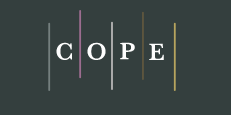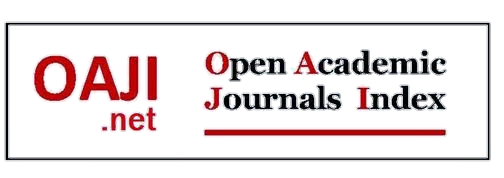Assessing Barriers to Implementation of Employee Code of Conduct: A Case of Lusaka's Public Schools
1Constance Chama Kasase, 2Chrine C. Hapompwe
1,2Graduate School of Business, The University of Zambia 10101 Great East Road Campus, Lusaka, Zambia.
https://doi.org/10.47191/jefms/v8-i4-17ABSTRACT:
This study assessed the role and significance of employee code of conduct in steering ethical behavior and improving organizational outcomes, particularly in public educational institutions. The questions of the study were: what are the main barriers to the effective implementation of the Employee Code of Conduct in public secondary schools in Lusaka District? What mechanisms are currently in place to enforce the Employee Code of Conduct in these learning institutions? And how do these barriers affect the integrity and performance of the public schools? The study employed a mixed-methods approach with random and purposive as sampling techniques while pragmatism was the underpinning philosophy. By integrating both quantitative and qualitative methods, this research aimed to provide a comprehensive understanding of the roles of leadership, reward systems, and organizational culture in ensuring adherence to ethical behavioural standards by educators. The study population included teachers, regulators, sub-sector unions, and educational administrators of the schools. The sample size was Three Hundred and Fifty-three (353) with an 85% (300) return rate. The secondary data was from documents, written records, research publications, annual publications from the MoE, and any other readily available information that the researcher(s) came across including legislative, strategic plans, and policy documents, performance metrics, ethical codes etc., while primary data was collected using questionnaires, interview schedules and focus group discussions. Findings revealed a high level of awareness among employees though understanding and adherence varied across staff categories, with inconsistent enforcement being a noted challenge. Employees acknowledged the positive impact of the code of conduct on school culture and professionalism but suggested improvements in policy clarity. To address these challenges, it was strongly recommended that refinement of the code of conduct be done, enhancing training on ethical decision-making, and establishing regular monitoring and evaluation mechanisms.
KEYWORDS:
Employee Code of Conduct, Ethical Behavior, Public Institutions, Enforcement Mechanisms, Disciplinary Procedures, Organizational Outcomes.
REFERENCES:
1) Arar, K., Miri, M., & Bakkar, B. (2022). The impact of teachers’ professionalism and ethical behavior on student outcomes. International Journal of Educational Management, 36(5), 887-900.
2) Avolio, B. J., & Yammarino, F. J. (2013). Transformational and charismatic leadership: The road ahead. Bingley, UK: Emerald Group Publishing.
3) Bass, B. M., & Riggio, R. E. (2006). Transformational leadership (2nd ed.). Mahwah, NJ: Lawrence Erlbaum Associates.
4) Bass, B. M., & Riggio, R. E. (2006). Transformational leadership. Lawrence Erlbaum Associates.
5) Blau, P. M. (1964). Exchange and power in social life. New York, NY: John Wiley & Sons.
6) Brenner, S. N., & Molander, E. (2021). The role of codes of conduct in promoting ethical behavior in organizations. Journal of Business Ethics, 168(2), 293-308.
7) British Educational Research Association. (2018). Ethical guidelines for educational research (4th ed.). London: BERA.
8) British Sociological Association. (2017). Statement of ethical practice. Durham: BSA.
9) Brown, M.E & Trevino, L.K. (2006). Ethical leadership: A review and future directions. The leadership quarterly, 17(6), 595-616.
10) Bryman, A. (2012). Social research methods (4th Ed.). Oxford University Press.
11) Bryman, A. (2016). Social research methods (5th Ed.). Oxford University Press.
12) Campbell, E., & Whetstone, T. (2022). Teaching ethics: The importance of codes of conduct in education. Journal of Education and Ethics, 45(3), 203-220.
13) Chêne, M. (2013). Effectiveness of codes of conduct in promoting integrity and transparency. Transparency International.
14) Choi, J., & Ahn, J. (2013). The role of reward and punishment systems in influencing compliance behavior in organizations. Journal of Organizational Behavior, 34(3), 403-421. https://doi.org/10.1002/job.1823
15) Creswell, J. W. (2014). Research design: Qualitative, quantitative, and mixed methods approach (4th ed.). Sage Publications.
16) Creswell, J. W. (2014). Research design: Qualitative, quantitative, and mixed methods approach (4th ed.). SAGE Publications.
17) Creswell, J. W., & Creswell, J. D. (2018). Research design: Qualitative, quantitative, and mixed methods approach (5th ed.). SAGE Publications.
18) Creswell, J. W., & Plano Clark, V. L. (2018). Designing and conducting mixed methods research (3rd ed.). SAGE Publications.
19) Cropanzano, R., & Mitchell, M. S. (2005). Social exchange theory: An interdisciplinary review. Journal of Management, 31(6), 874-900. https://doi.org/10.1177/0149206305279602
20) Davis, R. (2021). Implementing codes of conduct in state-owned enterprises. Public Sector Review, 50(3), 200-215.
21) De George, R. T. (2024). A history of business ethics. Retrieved from BBVA Open Mind.
22) Deci, E. L., & Ryan, R. M. (2000). The "what" and "why" of goal pursuit: Human needs and the self-determination of behavior. Psychological Inquiry, 11(4), 227-268.
23) Denison, D. R. (1996). What is the difference between organizational culture and organizational climate? A native’s point of view on a decade of paradigm wars. Academy of Management Review, 21(3), 619-654. https://doi.org/10.5465/amr.1996.9702100310
24) Diamond TV, Zambia Reports, ZNBC. (2023). Reports on teacher misconduct.
25) Eisenhardt, K. M. (1985). Control: Organizational and economic approaches. Management Science, 31(2), 134-149.
26) Eisenhardt, K. M. (1985). Control: Organizational and economic approaches. Management Science, 31(2), 134-149.
27) Erwin, P. M. (2011). Corporate codes of conduct: The effects of code content and quality on ethical performance. Journal of Business Ethics, 99(4), 535-548. 28) Ethics & Compliance Initiative. (2021). Addressing ethics & compliance challenges for multinational organizations. Retrieved from https://www.ethics.org/wp-content/uploads/2021-ECI-WP-Ethics-Compliance-Mulinational-Organizations.pdf
29) Fixsen, D. L., Naoom, S. F., Blase, K. A., Friedman, R. M., & Wallace, F. (2005). Implementation research: A synthesis of the literature. University of South Florida.
30) Guest, G., Bunce, A., & Johnson, L. (2006). How many interviews are enough? An experiment with data saturation and variability. Field Methods, 18(1), 59-82.
31) Harvard Business Review. (2021). Research: How cultural differences can impact global teams. Retrieved from [source].
32) Holm, K., & Lillywhite, S. (2003). The role of leadership in shaping organizational norms and culture. Journal of Business Ethics, 45(3), 195-208. https://doi.org/10.1023/a:102419451
33) Hughes, O. E. (2012). Public management and administration: An introduction (4th Ed.). Palgrave Macmillan.
34) Jimenez, A. (2019). Ethics in the public sector: Analyzing the ethical behavior of public sector employees. California State University, Northridge.
35) Johnson, M., & Lee, S. (2019). Barriers to ethical behavior in public institutions. Ethics in Public Administration,34(1),78-92.
36) Kaptein, M. (2015). The effectiveness of ethics programs: The role of scope, composition, and sequence. Journal of business ethics. 132(2), 415-431.
37) Kerr, S. (1975). On the folly of rewarding A, while hoping for B. Academy of Management Journal, 18(4), 769-783.
38) Klein, K. J., & Sorra, J. S. (1996). The challenge of innovation implementation. Academy of Management Review, 21(4), 1055-1080.
39) Kombo, D. K., & Tromp, D. L. A. (2013). Proposal and thesis writing: An introduction. Nairobi: Pauline’s Publications Africa.
40) Kothari, C. R. (2008). Research methodology: Methods and techniques (2nd Ed.). New Age International.
41) Kumasey, A. S., Delle, E., & Ofei, S. B. (2017). Organizational ethics and employees’ ethical behavior: The mediating role of ethical climate. Journal of Business Ethics, 140(3), 561-574.
42) Leithwood, K., & Jantzi, D. (2000). The effects of transformational leadership on organizational conditions and student engagement with school. Journal of Educational Administration, 38(2), 112-129.
43) Li, S.-A., Jeffs, L., Barwick, M., & Stevens, B. (2018). Organizational contextual features that influence the implementation of evidence-based practices across healthcare settings: A systematic integrative review. Systematic Reviews, 7(1), 72. https://doi.org/10.1186/s13643-018-0734-5
44) Li, X., Liang, J., & Ge, C. (2021). The impact of reward and punishment expectations on employees’ compliance behavior. Journal of Business Ethics, 164(2), 345-360. https://doi.org/10.1007/s10551-020-04612-3
45) Lindner, S. (2014). Implementing codes of conduct in public institutions. Transparency International. Retrieved from [source].
46) Lunenburg, F. C. (2021). The role of ethics in education. International Journal of Educational Leadership Preparation, 16(1), 12-20.
47) Mckinney, J.A., Emerson, T.L.N., & Neubert, M.J. (2020). Corporate codes of ethics: insights from social science. Business horizon, 63(5), 633-641.
48) Miles, M. B., & Huberman, A. M. (1994). Qualitative data analysis: An expanded sourcebook (2nd ed.). Sage Publications.
49) Ministry of Education, Zambia. (2023). Employee establishment report.
50) MIT Sloan Management Review. (2020). Overcoming obstacles to successful culture change. Retrieved from [source].
51) NASDTEC (2019). Model Code of Ethics for Educators.
52) National Assembly of Zambia. (1994). Parliamentary and Ministerial Code of Conduct Act. Retrieved from [source].
53) National Conference of State Legislatures. (2024). Ethics and public corruption laws: Penalties. Retrieved from [source].
54) OECD (2019). OECD Guidelines for Managing Conflict of Interest in the Public Service.
55) Organization for Economic Cooperation and Development (OECD). (2000). OECD guidelines for multinational enterprises. Retrieved from [source].
56) Patton, M. Q. (2015). Qualitative research & evaluation methods: Integrating theory and practice (4th Ed.). SAGE Publications.
57) Pennsylvania State University. (2024). A (brief) history of codes of ethics. Retrieved from [source].
58) Roy, A., Newman, A., Round, H., & Bhattacharya, S. (2023). Ethical culture in organizations: A review and agenda for future research. Business Ethics Quarterly, 34(1), 97-138. Retrieved from https://www.cambridge.org/core/journals/business-ethics-quarterly/article/ethical-culture-in-organizations-a-review-and-agenda-for-future-research/5ECE055C6B5A931FCD12D6D28E297EDC
59) Sakyi, E. K., & Bawole, J. N. (2009). Barriers to implementing codes of conduct in Anglophone West African countries. Public Administration and Development, 29(3), 193-204. https://doi.org/10.1002/pad.539
60) Schein, E. H. (1992). Organizational culture and leadership. Jossey-Bass.
61) Schein, E. H. (2010). Organizational culture and leadership (4th Ed.). San Francisco, CA: Jossey-Bass.
62) Smith, I. H., & Kouchaki, M. (2021). Building an ethical company. Harvard Business Review, 99(6), 76-85. Retrieved from [source].
63) Smith, J. (2020). The role of leadership in ethical governance. Governance Today, 29(4), 45-60.
64) Survey Monkey. (2024). Online survey tool. Retrieved from [source].
65) Transparency International. (2014). Implementing codes of conduct in public institutions. Knowledge Hub.
66) Transparency International. (2018). Corruption perceptions index 2018.
67) Trevino. L.K, Weaver, G.R., & Reynodes, S.J. M (2014). Behavioural ethics in organizations: A review. Journal of Management, 40(4), 949-977.
68) UNESCO (2019). Education for All 2000-2015: achievements and challenges.
69) Weaver, G.R., Trevino, L.K., & Cochram, P.L. 2019) corporate ethics programs as control systems: Influences of executive commitment and environmental factors. Academy of management journal, 42(1), 41-57.
70) Yukl, G. (2010). Leadership in organizations. Prentice Hall.
















